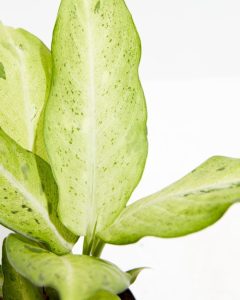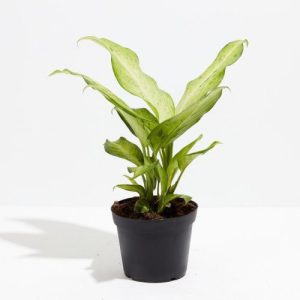- English
- Chinese
- French
- German
- Portuguese
- Spanish
- Russian
- Japanese
- Korean
- Arabic
- Irish
- Greek
- Turkish
- Italian
- Danish
- Romanian
- Indonesian
- Czech
- Afrikaans
- Swedish
- Polish
- Basque
- Catalan
- Esperanto
- Hindi
- Lao
- Albanian
- Amharic
- Armenian
- Azerbaijani
- Belarusian
- Bengali
- Bosnian
- Bulgarian
- Cebuano
- Chichewa
- Corsican
- Croatian
- Dutch
- Estonian
- Filipino
- Finnish
- Frisian
- Galician
- Georgian
- Gujarati
- Haitian
- Hausa
- Hawaiian
- Hebrew
- Hmong
- Hungarian
- Icelandic
- Javanese
- Kannada
- Kazakh
- Khmer
- Kurdish
- Kyrgyz
- Latin
- Latvian
- Lithuanian
- Luxembou..
- Macedonian
- Malagasy
- Malay
- Malayalam
- Maltese
- Maori
- Marathi
- Mongolian
- Burmese
- Nepali
- Norwegian
- Pashto
- Persian
- Punjabi
- Serbian
- Sesotho
- Sinhala
- Slovak
- Slovenian
- Somali
- Samoan
- Scots Gaelic
- Shona
- Sindhi
- Sundanese
- Swahili
- Tajik
- Tamil
- Telugu
- Thai
- Ukrainian
- Urdu
- Uzbek
- Vietnamese
- Welsh
- Xhosa
- Yiddish
- Yoruba
- Zulu
- Kinyarwanda
- Tatar
- Oriya
- Turkmen
- Uyghur

N'ihi usoro ya mara mma na ahịhịa dị mma, nke Diffenbachia—sometimes known as “Dieffenbachia” or “Green Leaf Dieffenbachia—a common kind of indoor foliage plant is highly sought after. Dieffenbachia must be grown in a healthy state, hence one must have a strong awareness of the perfect environment for its growth. With the intention of helping lovers to better manage this amazing plant, this page offers information on the ideal growth conditions of Dieffenbachia: light, temperature, humidity, soil, and maintenance.

Diffenbachia
Ọnọdụ ọkụ
DiffenBachia malitere na nnukwu akụkụ n'okpuru mmetụta nke ọkụ. Ọ bụrụ na osisi ahụ ka osisi kwesịrị ekwesị, ọ nwere ike inwekwu fotoyynthesis na mmepe. Osisi siftenbachia kwesịrị toro na mpaghara nwere ìhè nwere ike ịgbanyụ dị ka akwụkwọ ya na-ada mgbe ụfọdụ na ìhè anyanwụ. A dụrụ ọdụ na ị na-etinye ya na windo dị otú a, ọ bụrụgodị na ị ga-ezere ìhè anyanwụ.
Should the light be insufficient, Dieffenbachia’s growth may slow down and the leaves’ color can become dull. Plant growth lights may be used to provide enough artificial light, especially in the winter or on days with cloud cover, therefore meeting the needs for light for the plant. Furthermore, constant movement of the plant’s position helps to guarantee that it gets light consistently and helps to stop unilateral development.
Ntughari tempo
Dieffenbachia’s development also depends much on temperature in a major sense. The general agreement is that the best temperature for growth falls between sixty-five and eighty degrees Fahrenheit. Should the plant be subjected to temperatures below fifty degrees, its growth might be hampered and maybe compromised. Avoiding putting the Dieffenbachia plant near windows that are cold can help to guard it from the damaging effects of low temperatures and frost all through the winter.
Diffenbachia nwere ike ịdị ndụ na ọnọdụ okpomọkụ niile n'oge ọkọchị, n'ihi ya, ọ ka dị mma iji zere gburugburu na-ekpo oke ọkụ, ọkachasị ndị na-ekpughe ìhè anyanwụ. Okpomoku di elu nwere ike ime ka ihe gha tufuo mmiri ngwa ngwa, ya mere epupụta nwere ike ịdị edo edo na asat. N'ihi ya, ọ dị mkpa iji hụ na a na-edobe ụlọ okpomọkụ na ọkwa kwesịrị ekwesị ma na-eme mmiri n'oge dị anya a na-ekwe nkwa uto uto nke siffenbachia.
Nkọwapụta maka iru mmiri
Dieffenbachia has certain humidity requirements that need to be satisfied as it is native to humid tropical environments. The ideal humidity range is fifty to seventy; so, this is the quantity that should be reached. Grown in an environment rich in dryness, dieffenbachia is prone to problems like yellowing or dry leaf tips. Here are several techniques you may use to raise the air’s humidity.
To increase the humidity of the nearby air, first you might arrange a water dish or spray around the plant. You may also use a humidifier, which is especially helpful in the winter when the house’s air often becomes dry. Furthermore, regularly wiping the leaves on a damp cloth will not only help to increase the humidity of the air but also help to remove dust, therefore improving the appearance of the plant.
Ihe ndabere maka ala
DiffenBachania chọrọ ala kwesịrị ekwesị maka uto ya ma ọ bụrụ na ọ ga-eme nke ọma. Diffenbachia na-eto nke ọma na rụrụ, poruus ala. A na-ewerekarị ya dị ka ngwakọta kachasị mma nke ala gụnyere humus, ala ubi, na ájá. Ala a agwakọtara nwere ike iwepụta mmiri zuru oke ma gbochie mkpokọta mmiri na mgbọrọgwụ, yabụ na-egbochi ire ere ọ bụla.
Site na ịgbakwunye polate ma ọ bụ oyibo bran mgbe ị na-eto diffenbati, ị nwere ike melite ikuku ikuku na ntinye mmiri nke ala. Nke a ga - enyere aka ịmị mmiri nke ọma. Ọzọkwa, nnọchi ugboro ugboro na oge opupu ihe ubi nke afọ ọ bụla - nwere ike ịnye ihe ọkụkụ na-edozi ahụ ma kwado uto ya.
Fertilizingzọ
Njikọ etiti na-agbanwe agbanwe dị mkpa iji mee ka diffenBachia n'ọnọdụ dị mma. Ọtụtụ mgbe, osisi na-egosi ọtụtụ ihe oriri ngwa ngwa, oge ọkọchị na udu mmiri na-achọ itinye nri nri nke nitrogen, phosphate, na potassium. Na-atụgharị fatịlaịza ma wetting ya tupu ị tinye ya n'ala na-enyere mmadụ aka igbochi ọkụ.
N'ime mgbụsị akwụkwọ na udu mmiri, daffenbachia ga-akwụsịlata na uto. Ka ọ na-erule ugbu a, a ga-ewepụ ugboro ugboro nke njikọta spam iji zere nsogbu na ihe ọkụkụ na-esite na ọkwa dị elu. Iji nweta nsonaazụ kachasị mma, mmadụ kwesịrị ịlebara anya na nzaghachi nke ihe ọkụkụ niile na-eme nke ọma ma mee mgbanwe ndị dị mkpa na oge kwesịrị ekwesị.
Mmezi na nchịkwa nke nguzobe
Ewezuga akụkụ nke gburugburu mmepe nke e kwupụtara, mgbe ọ bụla na-edozi siffenbachi dị mkpa. Nọgide na-enwe ahụ ike nke osisi na-adabere na nyocha nke ahịhịa mgbe niile na iwepụ ọrịa na ọrịa. Ọzọkwa ọ dị mkpa bụ ihe omume a na-eme nke ọma site na iji jide n'aka ugboro ole ịgbara mmiri kwesịrị ekwesị ma site na ala adịghị oke ma ọ bụ mmiri.
Site n'idebe mmepe nke ihe ọkụkụ na ibelata akwụkwọ ọlaedo n'oge kwesịrị ekwesị, mmadụ nwere ike iji uru ịchọ mma nke osisi ahụ na-agbasa. Nke a ga - enyere aka na - ahapụ ọhụrụ. N'otu oge, dochie anya akpa ifuru dị mkpa iji hụ na osisi nwere ohere zuru ezu maka uto.
Ọrịa na pesti mkpochapu
Ndị nkịtị na-emekarị na ọrịa Daffenbachia nwere ike iweta aphid, ududo ududo, mildew powdery. Mee atụmatụ nyocha nke ahịhịa maka osisi; Ọ ga-akpata nsogbu na-ebilite, zaghachi ngwa ngwa iji nye mmezi. Inwere ike iji mmiri dị ọcha mee ka mmiri dị ọcha ma ọ bụ ịgba mmiri zuru oke mmiri fatịlaịza na ha ijikwa ma gbochie obere pests. Ihe ndị a bụ edozi ezi uche. Anyị kwesịrị ọgwụ na-ata ahụhụ karịsịa maka ọgwụgwọ nke oké ọrịa.
Na-ejide ọnọdụ dị iche iche kwesịrị ekwesị na-enyere mmadụ aka ime ka ihe mberede belata nke ọrịa na ụmụ ahụhụ. Na-ejide ikuku dị mma na iru mmiri dị n'ime ụlọ ahụ bụ ụzọ dị oke mkpa iji buso ahụhụ na ọrịa. Ezi ahụike maka osisi na-eme ka mmadụ niile na-eme ka mmadụ niile ma nyere ha aka imeghari na gburugburu ha.

Diffenbachia
A na-ewu ewu dị ka akwụkwọ na-acha akwụkwọ ndụ, FaffenBachia na-eto nke ọma na mpaghara na-enye ezi nguzozi nke ìhè, ọnọdụ okpomọkụ, ọnọdụ ala, njikwa ala, njikwa ala. Buru ụzọ mata mkpa ndị a wee mezuo ha ga-enyere aka Alicionados na-ekwe nkwa kachasị mma Diffenbachia ma gosiputa ihe omuma ya puru iche. Learningmụta ịchịkwa ihe ndị a na-ele anya ga-enyere gị aka ọ bụghị naanị ịkpọlite mkpesa nke osisi kamakwa ịkwalite uto gị. Nnyocha ha na omume ha ga-enyere Amiciouonados anya ka ọ bụrụ ihe dị ukwuu nke njikọ nke onwe ha na ọ joyụ na echiche nke ihe ọkụkụ.



